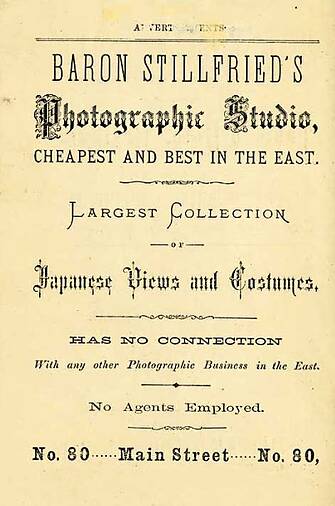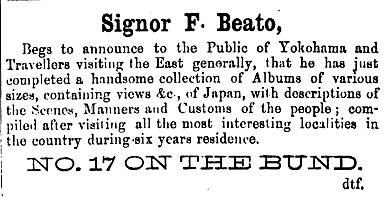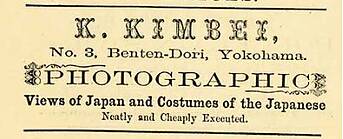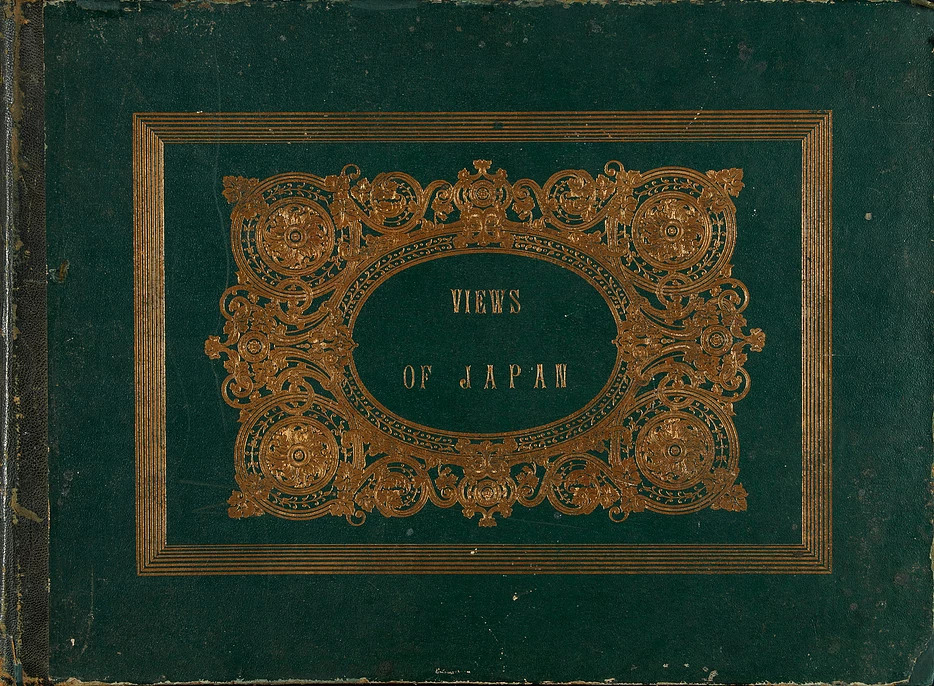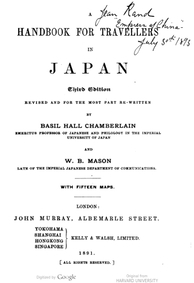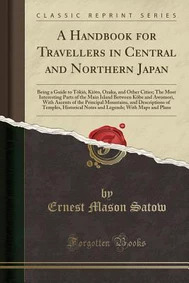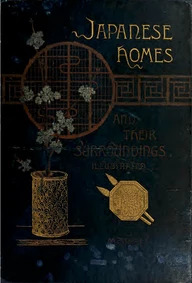Room No. 1
Before the Fair
Westerners’ First Impression of Japan and Japanese Architecture through Souvenir Photo Albums
Kusakabe Kimbei, The Mikado’s Garden, at Kyoto. c. 1880 – 1890.
Source: New York Public Library
The Opening of Japan
On July 8, 1853, the arrival of American warships under Commodore Matthew Calbraith Perry in Edo (now Tokyo) Bay precipitated an end to the policy of national seclusion (sakoku) that had kept Japan politically isolated from the outside world for over 200 years. Photography served as a main form of documenting Perry’s expedition to Japan. Eliphalet Brown Jr., the mission’s chief photographer, took more than 400 photographs of Japanese people and scenery. Although most of Brown’s original photographs have been lost today, in the 1850s, they served as the basis for lithographic reproductions in illustrated publications about Perry’s expedition. Through these lithographs, many Americans saw contemporary Japan for the first time.
This brightly colored lithograph presenting a panoramic view of Gore-hama is a reproduction of a drawing made by William Heine (1827-1885), a German-born artist. He also joined Perry’s fleet and captured Japan primarily with sketches and watercolors. Together, Heine’s illustrations and Eliphalet Brown Jr.’s photographs formed the basis of an official artistic documentation of the first American expedition to Japan.
The Business of Early Photography in Japan
After the opening of Japan to diplomacy and trade with Americans and Europeans, the rapid influx of foreign travelers and their growing fascination with Japan resulted in a burgeoning market for souvenir photography. Commercial photographers of different nationalities began to set up their studios and ply their trade in Yokohama, where foreign envoys, merchants and visitors congregated. The great quantity of advertisements in newspapers and tourist guides promoting photography studios and their services suggest the prosperity of this new business. Some of the most popular photographers include Felice Beato, Baron Raimund von Stillfried, Adolfo Farsari and Kusakabe Kimbei. Their photographs, when carried back to the foreign travelers’ home countries, greatly helped to shape a Western understanding of Japan.
Tourist Albums
Souvenirs from Japan in the Second Half of the 19th Century
Lacquer Album Cover, Photographer Adolfo Farsari. c. 1886.
Source: Museum of Fine Arts Boston
Album Covers
These photographs of Japan were usually assembled in the form of an album. The albums assumed different formats and sizes, containing anywhere from twenty-five to over one hundred photographs. The materials used to make the album covers also varied from simple fabrics to brocades to decorated lacquer. Those with lacquer covers were the most expensive and were usually sold together with cloth cases of traditional Japanese style.
Commercial photography studios offered several purchasing options. Typically, customers could either purchase a ready-made album or select and arrange individual photographs by browsing through a catalogue that conveyed basic information such as title and subject.
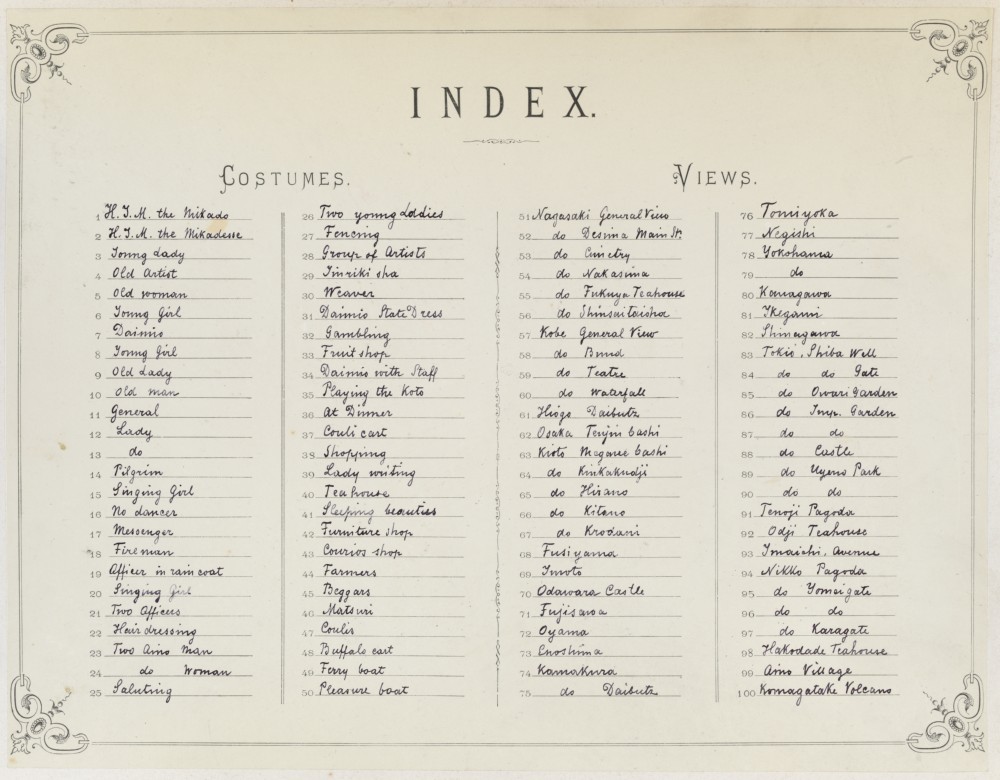


Baron Raimund von Stillfried, Index to Views and Costumes of Japan, 1876.
Source: State Library Victoria
Photo Genres
In a souvenir album, the photographs were often divided into two categories according to their subjects—”Costumes” and “Views.” “Costumes” consisted of portraits of indigenous Japanese and genre scenes depicting various occupations and everyday life. “Views” consisted of landscapes and cityscapes.
Since the commercial photographers aimed to make a profit above all else, souvenir albums were produced mainly to satisfy the interests of their Western customers. As a result, “Costumes” were staged artificially inside studio sets, while “Views” presented a limited range of themes that look typically “Japanese,” conforming to Western stereotypes of a strange foreign land.
Views of Modernized Japan
While the photographs in tourist albums conveyed to Western visitors images of traditional and unchanged Japan, the country was actually experiencing rapid modernization.
A view of Yokohama in the 1860s shows the trading port crowded with buildings in the foreground. In the distance, a great number of large sailing vessels are moored in the harbor. The photograph in the middle depicts Benten Bridge and Yokohama Station in 1873. The train station was the starting point for the railroad connection to Tokyo, and the tracks are hidden behind the buildings. The final photograph presents a view of the Shinbashi Bridge and Ginza Avenue in Tokyo. This image shows the importance of horse-drawn streetcars, which started operations in 1882 and were completely replaced by electrified ones in 1904. Cars, cables, and street lamps are all noticeable signs of modernization.
View on Yokohama, c. 1860s.
Source: Meiji Showa
Bentenbashi and Station, c. 1870s.
Source: Old Photos of Japan
Shinbashi Bridge Ginza, c. 1880s.
Source: Old Photos of Japan
Exotic Japan in Tourist Albums
The comparison between Felice Beato’s album of the 1860s and Kusakabe Kimbei’s album of the 1880s, focusing on “Views” of Japan, reveals the commercial photographers’ ongoing practice of presenting Japan as an exotic place in the second half of the 19th century. The two featured albums convey an aura of inscrutability and timelessness, accentuated by the soft hues of the color hand tinting of the black and white images.
To simulate a real trip in Japan, photographs were arranged in a specific sequential order based on the geographical locations of the sites. To make the route of the journey clear, each photograph was also accompanied by a caption that indicates the specific location.
Publications by Western Specialists on Japan
Japan: Its Architecture, Art, and Art Manufactures, 1882.
Dresser, Christopher
Dresser, who visited Japan for four months during 1876/77, was according to his own description “an architect and ornamentalist by profession.” During his time there, he made daily records of what he saw and accompanied those with his own drawings. His book focuses on Japanese architectural details and art manufacturers, but he also observed flowers, plants, birds, and other things he encountered.
A Handbook for Travellers In Japan, 3d ed., 1891.
Mason, W. B, Basil Hall Chamberlain, and John Murray (Firm);
Chamberlain, a co-writer of this travel guide, was an active intellectual figure during the late 19th century in Japan. Staying nearly 40 years in Japan beginning in 1873, he held successive teaching positions at the Imperial Japanese Naval Academy and Tokyo Imperial University. A specialist in language and literature, he translated major Japanese works into English as well as authored books on the social life, customs, and languages of Japan.
A Handbook for Travellers in Center & Northern Japan…, 1881.
Satow, Ernest Mason, Sir.
Satow lived in Japan for more than two decades. He was a linguist and collector of Japanese books and manuscripts. He also studied Japanese culture, history and language in depth. This travel guide, targeting ordinary Western visitors, recommends ideal routes for traveling in Japan and includes descriptions of famous attractions in every city along the routes. Isabella Stewart Gardner, the prominent Boston art patron and collector, also used this guide when she was in Japan.
Japanese Homes and Their Surroundings, 1886.
Morse, Edward Sylvester.
In 1877, Morse arrived in Japan for the first time to work as a zoology professor at Tokyo Imperial University for three years. He returned to Japan several times later. This book was published in 1886 after his many visits. It presents design characteristics and notable features of Japanese houses, as well as carpenter tools and interior decorations. Like Dresser, he supplied his own drawings as illustration.



